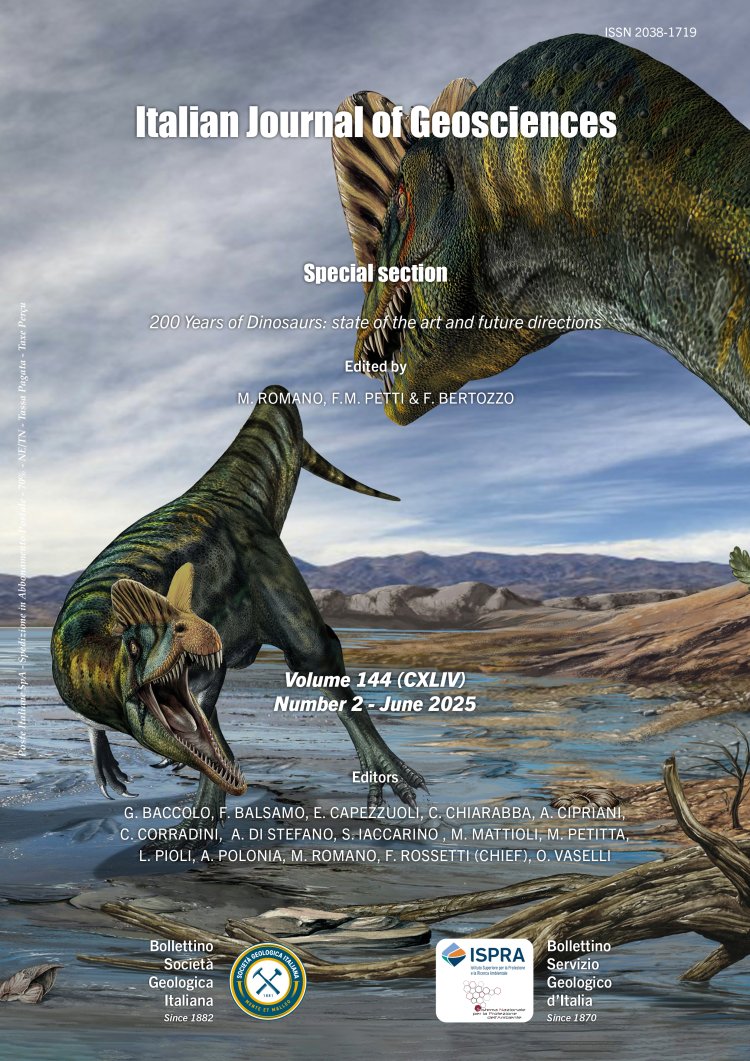
The first record of Cretaceous mammaliaform and dinosaur track assemblages from South China
Lida Xing1,2,3, Jialin Mi4, Jens N. Lallensack5, Qiyan Chen2, Hendrik Klein6, Qi Qi2, Lin Liu2, Chang Liu7 & Hang Yin2
1State Key Laboratory of Geomicrobiology and Environmental Changes, China University of Geosciences, Beijing, China.
2School of Earth Sciences and Resources, China University of Geosciences, Beijing, China.
3Dinosaur Odyssey Science Museum, Guangxi, China.
4Department of Sports and Leisure, College of Culture, Arts and Sports, Honam University Gwangju, Korea.
5Departamento de Ciência da Computação, Universidade Federal de Minas Gerais, Belo Horizonte, MG, Brazil.
6Saurierwelt Paläntologisches Museum, Neumarkt, Germany.
7School of Geosciences, University of Edinburgh, UK.
Corresponding author e-mail: xinglida@gmail.com
Volume: 144 (2025) f.2
Pages: 186-197
Abstract
Body fossils of Mesozoic mammaliaforms are rare, but their tracks are even rarer. We here describe a probable isolated mammaliaform or tritylodontid track from the Cretaceous of South China. This track is comparable to the ichnotaxa on Chelichnopodidae, and is the first mammaliaform track from South China. The track is a recent discovery at the Huaiji site, which was first described in 2023 and either belongs to the Mawu Formation (Albian–Cenomanian) or the Lailong Formation (Lower Cretaceous), Zhagang Group. Other tracks discovered at the site are described herein, including a theropod track that is closely similar to the Grallator morphotype or cf. Asianopodus isp. and two oval impressions that might represent the tracks of a quadruped, possibly a sauropod or a thyreophoran.
Currently, the Huaiji site represents the southernmost and most diverse vertebrate ichnofauna in China.
Keywords
Get Full Text